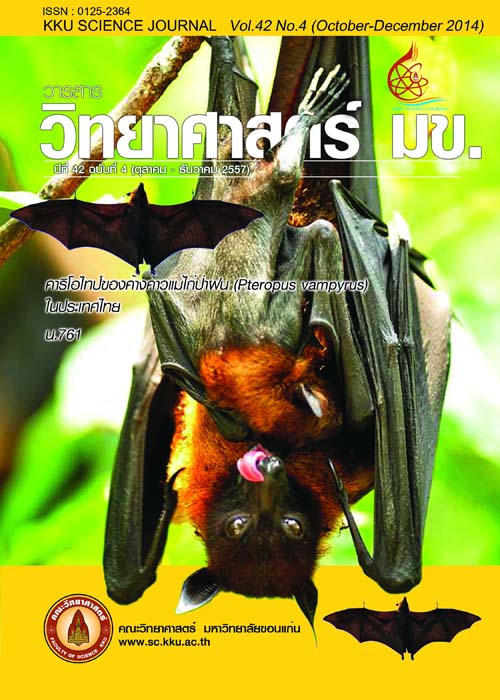The Integration of Local Wisdom with Scientific Process for the Development of Cotton Dyeing Process Using Colours Extracted from Marsdenia tinctoria
Main Article Content
Abstract
The objectives of this research were 1) to investigate local wisdom of Kokbok organiccotton-producing group in Loei province on cotton dyeing using natural dye extracted from Marsdenia tinctoria 2) to integrate local wisdom and a scientific process to develop a technique for cotton dyeing using natural dye extracted from Marsdenia tinctoria in laboratory, and 3) to apply the developed dyeing technique for cotton weaving groups. Qualitative research method and laboratory work were used. Questionnaires, workshops, and analytical chemistry experiments were employed. Target group included Kokbok organic-cotton-producing group, Phuluang district, Loei province. The investigation on local wisdom on cotton dyeing using natural dye extracted from Marsdenia tinctoria revealed that cotton was prepared by boiling in alkali ash-water. Cumin was used as a mordant in dyeing step. Dye extraction by immersed in
warm water at 60oC for 3-4 hours. To prepare an appropriate dyeing solution, calcium oxide (CaO) and tamarind were added. The solution was then aerated by recirculation using a water container to take and pour the solution until blue bubbles were observed. The laboratory results showed that the highest colour extraction yield was obtained from extracting ground leaves with water at 60o
C for 3 hours. The colour was tested in buffer solutions with pHs 3-12. It was found that at all pHs values tested, the spectra of the dye had a range of wavelengths between 224-685 nm. The highest absorbance of the dye in acidic (pH 3-6) and neutral (pH 7) conditions were at 267-302 nm and 224-267 nm, respectively. The highest absorbance of the dye in alkali (pH 8-12) condition was at 224-365 nm. Three dyeing conditions were tested, including acidic condition using tamarind paste, neutral condition using distilled water, and alkali condition using ash water. It was found that the highest L* values were obtained from all dyeing conditions when no calcium oxide was added. Dyeing with an addition of calcium oxide and aeration in both acidic and neutral conditions gave the lowest L* value. Alkali dyeing with calcium oxide and without aeration had the lowest L* value. With regards to colour tone, bluegreen colour was obtained from acidic dyeing; green colour was obtained from neutral and alkali dyeing. Acidic dyeing with calcium oxide and aeration provided the most intense blue colour (b* value = -4.24). Alkali dyeing with calcium oxide and without aeration provided the most intense green colour (a* value = -8.60). Stability of colour upon washing and light exposure was tested.
It was found that colour of the cotton dyed in acidic condition with calcium oxide and aeration was the most stable. The findings and knowledge were transferred to the target group by means of training session and workshop. It was found that the target group satisfied with the developed process and applied the process into a real practice.
Article Details

This work is licensed under a Creative Commons Attribution-NonCommercial-NoDerivatives 4.0 International License.


